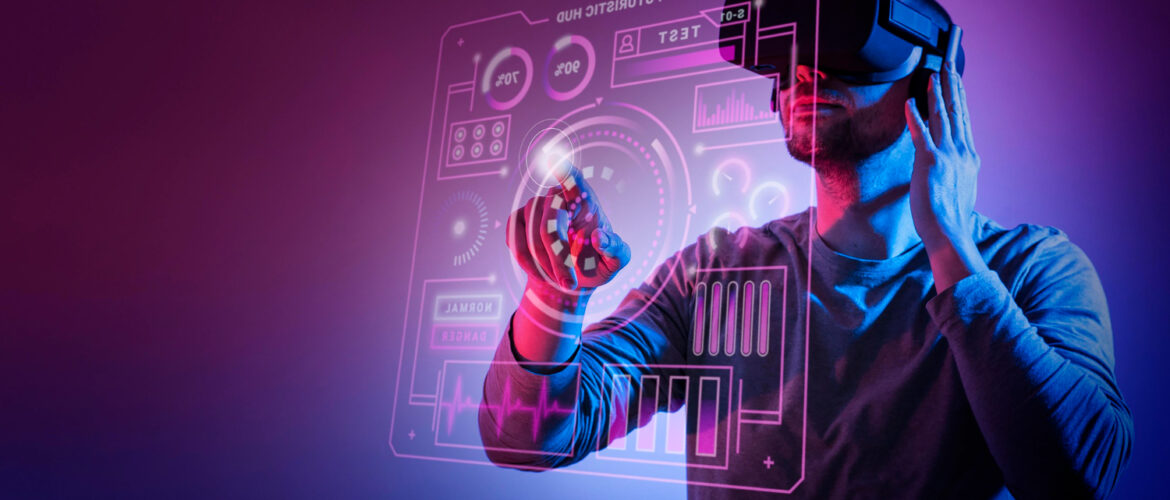Rapid technological advancements and cutting-edge innovations are causing a paradigm shift in global learning and education. How educators interact with students is evolving at an increasing pace, giving rise to incredible opportunities and complex challenges.
This article will weigh up some of the latest trends in technology and how they have an impact on the learning environments that current and future students will encounter. We will take a deep dive into revolutionary advances and the subsequent consequences that modern technology has created.
Online and Virtual Classrooms
The idea of online learning has been around for some time, with institutions like the National University in San Diego offering a vast array of online courses. However, the COVID-19 pandemic arguably catalyzed the trajectory of e-learning and virtual classrooms, which have now become just as popular for their flexibility and accessibility.
Online classrooms are now supported by a range of technologies, such as sophisticated video conference tools, collaborative platforms, AI-powered note-taking, and interactive interfaces. It has never been easier to learn from a distance, in the comfort of your home, during hours that work for you. Students can work full-time, run a household, and learn when it suits them.
However, we should explore how online learning can also have a negative impact on education. Technology can perform incredible feats, but when it goes wrong, it can disrupt a learning environment, wasting time and resources.
We must also consider student wellbeing – a purely online learning environment can create feelings of isolation with a reduction in social interaction. Consider how many more distractions will present while a student learns and how cheating or falsifying work must be combated and managed.
Augmented and Virtual Reality
Just as online classrooms become a new norm, we are then catapulted deeper into digital space via the use of augmented reality (AR) and virtual reality (VR) platforms. Now, we can bring our learning into our own environments or transport it into a 3D virtual space to learn through immersive technologies. Students can interact with learning like never before, increasing engagement and creating memorable experiences to aid the retention and application of information.
The Metaverse and other virtual spaces allow students to create avatars of themselves, an online persona that can interact with others. But is this a true interaction? Or should these virtual interactions be considered a disadvantage? VR and AR technology are not as accessible as other forms of learning technology, and educators require additional training in order to teach through these platforms. Certainly, the concept of VR learning environments is alluring, but the flexibility and current functionality still have a long way to go, as does the cost.
Gamification
Gamification in learning isn’t a particularly new concept. Teachers and educators have always found ways to make learning more engaging by getting creative with games, role-plays, reenactments, and the like. With the rise in technology, however, gamification is on the rise once again.
The psychology behind gamification is interesting; by offering incentives through achievement, leaderboards and virtual trophies, the personal investment into an educational game from a psychological standpoint is often very high; this is known as extrinsic motivation. Intrinsic motivation, or the desire to do something because you have an interest in the subject or task, is also a driving factor in what makes gamification successful. However, it is important that educators find a good balance of both motivation types in order to reinforce learning outcomes.
This leads us to the disadvantages of gamification as a learning tool. Again, finance has an important part to play in this; with initial costs including development, research and training plus the upkeep and maintenance costs, it can be an expensive tool in education.
Artificial Intelligence and Machine Learning
As Bill Gates announced, artificial intelligence (AI) is the most important technological advancement since the 80s. AI is revolutionizing the learning landscape in education, from personalized learning and adaptive assessment tools to intelligent tutoring systems. AI and Machine Learning (ML) can analyze learning patterns, offering customized learning solutions to increase knowledge transfer efficiency and retention as well as predictive analysis of performance, a plus for both students and teachers alike.
However, I’m sure we are all too aware of the dangers of AI in an educational setting. With AI still predominantly in its infancy, there are considerations to take when utilizing it in an otherwise traditional sector. For example, the accuracy of information that AI presents could cause information that is not suitable for students, whether it be inappropriate, incorrect or misleading.
As with other technologies, AI software could also crash or undergo emergency downtime during critical events, such as assessments. And, of course, as with all technologies, educators must undergo sufficient training in order to be able to effectively utilize the software in their classrooms and lesson plans. Other factors to consider are data protection security, reduction in human-to-human interaction, and inevitable attempts at cheating by using AI incorrectly assessed work.
Conclusion
Technology has been a driving force in so many new innovations in history across so many traditional sectors. Emerging trends and technologies contain the potential to redefine the dynamics of higher learning. With increased accessibility, more personalization, and high levels of collaboration, higher education institutions must now prepare students for both the challenges of the future and the skills and knowledge needed to utilize such advanced technology to its fullest.
While we are all captivated by the wonders of technology and its potential, we must also remember the disadvantages this brings. The digital world can be full of false information and uncensored discrimination and give rise to addictive habits. Technology could also be seen as a barrier to learning for more poverty-stricken countries and cities, with the costs of equipment being far greater than a simple pen and paper.
Nevertheless, embracing these technological trends allows educators to inspire and facilitate learning in previously unimagined ways, setting the stage for a new era of education that is dynamic, inclusive, and technologically advanced.
